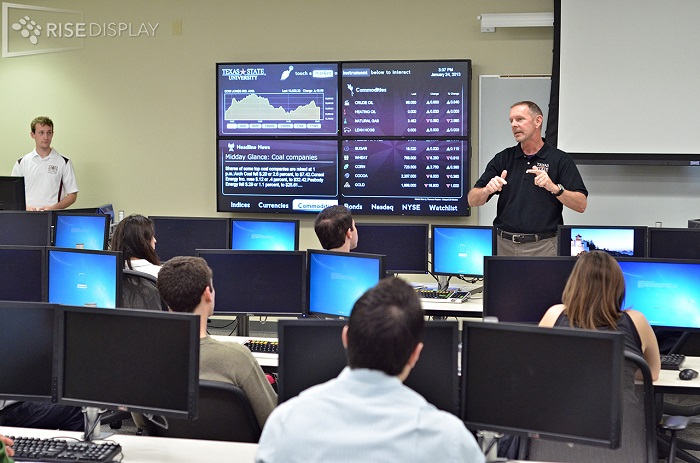Any institution which has a large building with specific sections needs to find a way to help visitors and even the people from that institute to be able to navigate their way around, listen to welcome messages and directions, and if possible also interact with digital signage to find answers to specific queries. Examples of such places are schools, colleges, hospitals, banks, restaurants and even factories. These are also the places where you would find broad applications of digital signage.
Let us take an example. We see a productive use of digital signage for schools and colleges, making educational institutions one of the biggest users of digital signage. Educational institutes would be likely to use digital signage for three purposes – to promote their school to visitors, to disseminate information to parents and students, and to provide direction to specific areas of the school. Many colleges and schools also use digital signage to some extent as a teaching aid for students. Here are some of the benefits of using digital signage in schools and colleges.
Benefits of digital signage for educational institutes:
Easier Information Flow
Traditionally, schools and colleges have printed thousands of leaflets to share information with parents and students, but the use of a digital interface at different locations of the school can help convey information about a variety of topics easily and throughout the day. For example, if a parent comes to the school and visits only the lobby and returns without bothering to check the notice board, he or she might miss out an important notice about a talent hunt. However, if this information is continuously beamed out in a television monitor placed strategically at the entrance lobby, no parent (or even student) would miss it.
More Effective Advertisement
Digital signage can intersperse the informational clipping with some pictures or videos of achievements by the school or its students and teachers. Many a time, parents and even students are not aware of all the accomplishments of the people who are associated with their school. Digital signage is a slick and efficient way to let everyone know the recent achievements of the school.
Greater Flexibility
Let’s say one of the meeting rooms (where parents can meet teachers) of a school has been relocated. A school using traditional modes of communication would need to make arrangements for new displays, and also put up notices informing the change to all, and even after all this, would need to answer several queries from parents regarding the new location. Digital signage, on the other hand, could be modified very easily and several times in a day, giving the school much greater flexibility of use.
Cost Control
This one is an undeniable benefit. Installation of a digital signage ecosystem across the school or college might involve an initial outlay of funds, but it will do away with the need for continuously printing new notices and leaflets. Over the long run, this would save the school hundreds of dollars. Digital signage can not only reduce costs, but they could even be a smart way to bring in revenue, by inviting manufacturers of educational products to insert advertisements on the digital signage screens.
While digital signage has grown in importance and popularity, can graphic designersbe left far behind? The graphic design element is what brings digital signage to life. With the right graphic design that is aligned with the proper purpose of installing the digital signage, the effectiveness can increase to a significant degree. These are the most important graphic design elements that a school or college should insist upon while its digital signage is in the planning and design stage.
Elements of graphic design in digital signage.
Crisp Messages
Digital signage works best when the information is efficiently conveyed so that anyone can receive it at a glance. All signage displays directed at visitors or parents would usually be placed at places where they might be passing through, so a quick glance at the signage would be all that they would have time for. Therefore, quickly transitioning multiple messages would be a much better idea than static but detailed information.
Useful Content
The design of the signage would need to be done in such a way that it takes into account the location where it would be placed and the purpose for which it is there. For instance, if a display is put inside one of the corridors of the school, it is likely that parents or outsiders would not see it. However, for a screen placed in the visitors’ lobby, the content should be such that it is useful and informative to visitors and parents too.
A Dose of Entertainment
Digital signage may come into view when a person is sitting for long in a waiting area. On the other hand, someone passing by may also take notice. In both scenarios, if some pictures, motion or animation is included in the display, it will not only grab the viewer’s attention, but it will also keep him or her glued to the message.
The field of education has become one of the most important areas where digital signage is being used. It not only gives the tangible benefits listed above, but it also improves the impression of the school or college on outsiders. Many schools and colleges are also taking that extra step and linking their digital signage content to their social media presence to get real-time updates on the signage. Many institutes have also made their digital signage interactive to make them even more useful. The exponential growth of digital marketing only points to an exciting time ahead for digital signage too, and a lot of that growth would be seen in schools and colleges.





